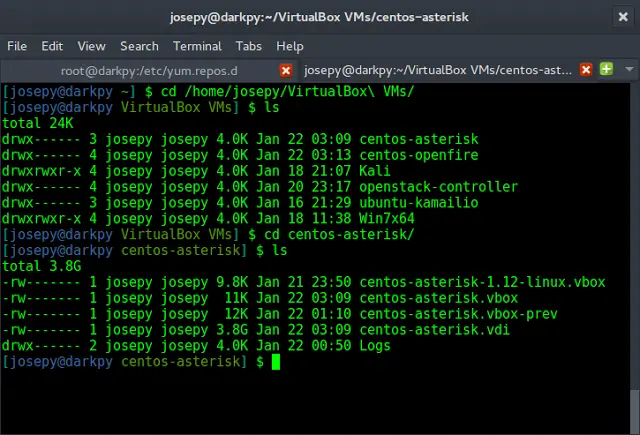Write a removeDuplicates() function that takes a list and deletes any duplicate nodes from the list. The list is not sorted.
For example if the linked list is 12->11->12->21->41->43->21 then removeDuplicates() should convert the list to 12->11->21->41->43.
METHOD 1 (Using two loops):
This is the simple way where two loops are used. Outer loop is used to pick the elements one by one and the inner loop compares the picked element with the rest of the elements.
Thanks to Gaurav Saxena for his help in writing this code.
Python3
# Python3 program to remove duplicates# from unsorted linked listclass Node(): def __init__(self, data): self.data = data self.next = Noneclass LinkedList(): def __init__(self): # Head of list self.head = None def remove_duplicates(self): ptr1 = None ptr2 = None dup = None ptr1 = self.head # Pick elements one by one while (ptr1 != None and ptr1.next != None): ptr2 = ptr1 # Compare the picked element with # rest of the elements while (ptr2.next != None): # If duplicate then delete it if (ptr1.data == ptr2.next.data): # Sequence of steps is important here dup = ptr2.next ptr2.next = ptr2.next.next else: ptr2 = ptr2.next ptr1 = ptr1.next # Function to print nodes in a # given linked list def printList(self): temp = self.head while(temp != None): print(temp.data, end = " ") temp = temp.next print() # Driver codelist = LinkedList()list.head = Node(10)list.head.next = Node(12)list.head.next.next = Node(11)list.head.next.next.next = Node(11)list.head.next.next.next.next = Node(12)list.head.next.next.next.next.next = Node(11)list.head.next.next.next.next.next.next = Node(10)print("Linked List before removing duplicates :")list.printList()list.remove_duplicates()print()print("Linked List after removing duplicates :")list.printList()# This code is contributed by maheshwaripiyush9 |
Output:
Linked list before removing duplicates: 10 12 11 11 12 11 10 Linked list after removing duplicates: 10 12 11
Time Complexity: O(n^2)
Auxiliary Space: O(1)
METHOD 2 (Use Sorting):
In general, Merge Sort is the best-suited sorting algorithm for sorting linked lists efficiently.
1) Sort the elements using Merge Sort. We will soon be writing a post about sorting a linked list. O(nLogn)
2) Remove duplicates in linear time using the algorithm for removing duplicates in sorted Linked List. O(n)
Please note that this method doesn’t preserve the original order of elements.
Time Complexity: O(nLogn)
Auxiliary Space :O(1)
METHOD 3 (Use Hashing):
We traverse the link list from head to end. For every newly encountered element, we check whether it is in the hash table: if yes, we remove it; otherwise we put it in the hash table.
Python3
# Python3 program to remove duplicates # from unsorted linkedlist class Node: def __init__(self, data): self.data = data self.next = Noneclass LinkedList: def __init__(self): self.head = None # Function to print nodes in a # given linked list def printlist(self): temp = self.head while (temp): print(temp.data, end = " ") temp = temp.next # Function to remove duplicates from a # unsorted linked list def removeDuplicates(self, head): # Base case of empty list or # list with only one element if self.head is None or self.head.next is None: return head # Hash to store seen values hash = set() current = head hash.add(self.head.data) while current.next is not None: if current.next.data in hash: current.next = current.next.next else: hash.add(current.next.data) current = current.next return head# Driver code if __name__ == "__main__": # Creating Empty list llist = LinkedList() llist.head = Node(10) second = Node(12) third = Node(11) fourth = Node(11) fifth = Node(12) sixth = Node(11) seventh = Node(10) # Connecting second and third llist.head.next = second second.next = third third.next = fourth fourth.next = fifth fifth.next = sixth sixth.next = seventh # Printing data print("Linked List before removing Duplicates.") llist.printlist() llist.removeDuplicates(llist.head) print("Linked List after removing duplicates.") llist.printlist()# This code is contributed by rajataro0 |
Output:
Linked list before removing duplicates: 10 12 11 11 12 11 10 Linked list after removing duplicates: 10 12 11
Thanks to bearwang for suggesting this method.
Time Complexity: O(n) on average (assuming that hash table access time is O(1) on average).
Auxiliary Space: O(n), for using the HashSet.
Please refer complete article on Remove duplicates from an unsorted linked list for more details!
You’ll access excellent video content by our CEO, Sandeep Jain, tackle common interview questions, and engage in real-time coding contests covering various DSA topics. We’re here to prepare you thoroughly for online assessments and interviews.
Ready to dive in? Explore our free demo content and join our DSA course, trusted by over 100,000neveropen! Whether it’s DSA in C++, Java, Python, or JavaScript we’ve got you covered. Let’s embark on this exciting journey together!




